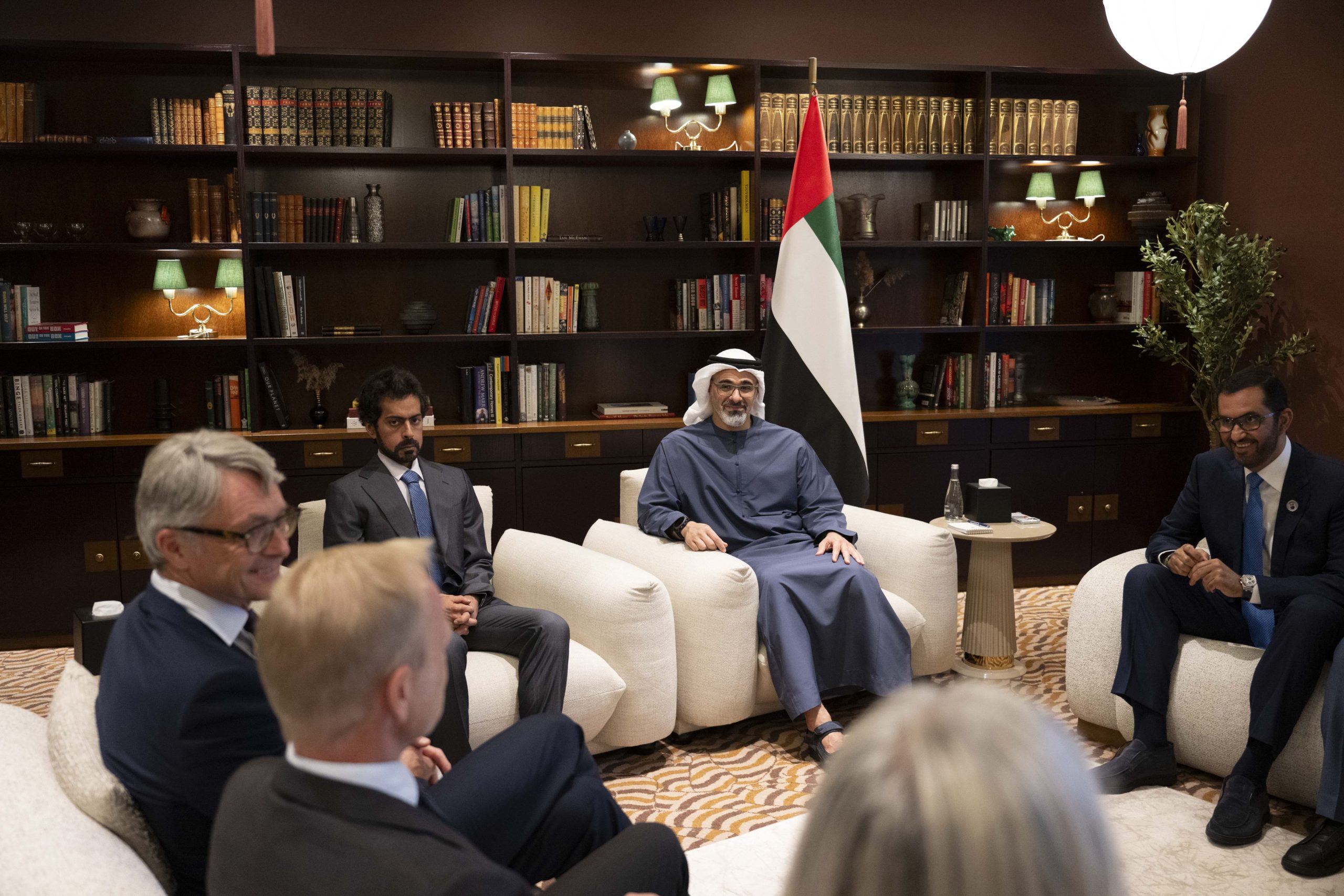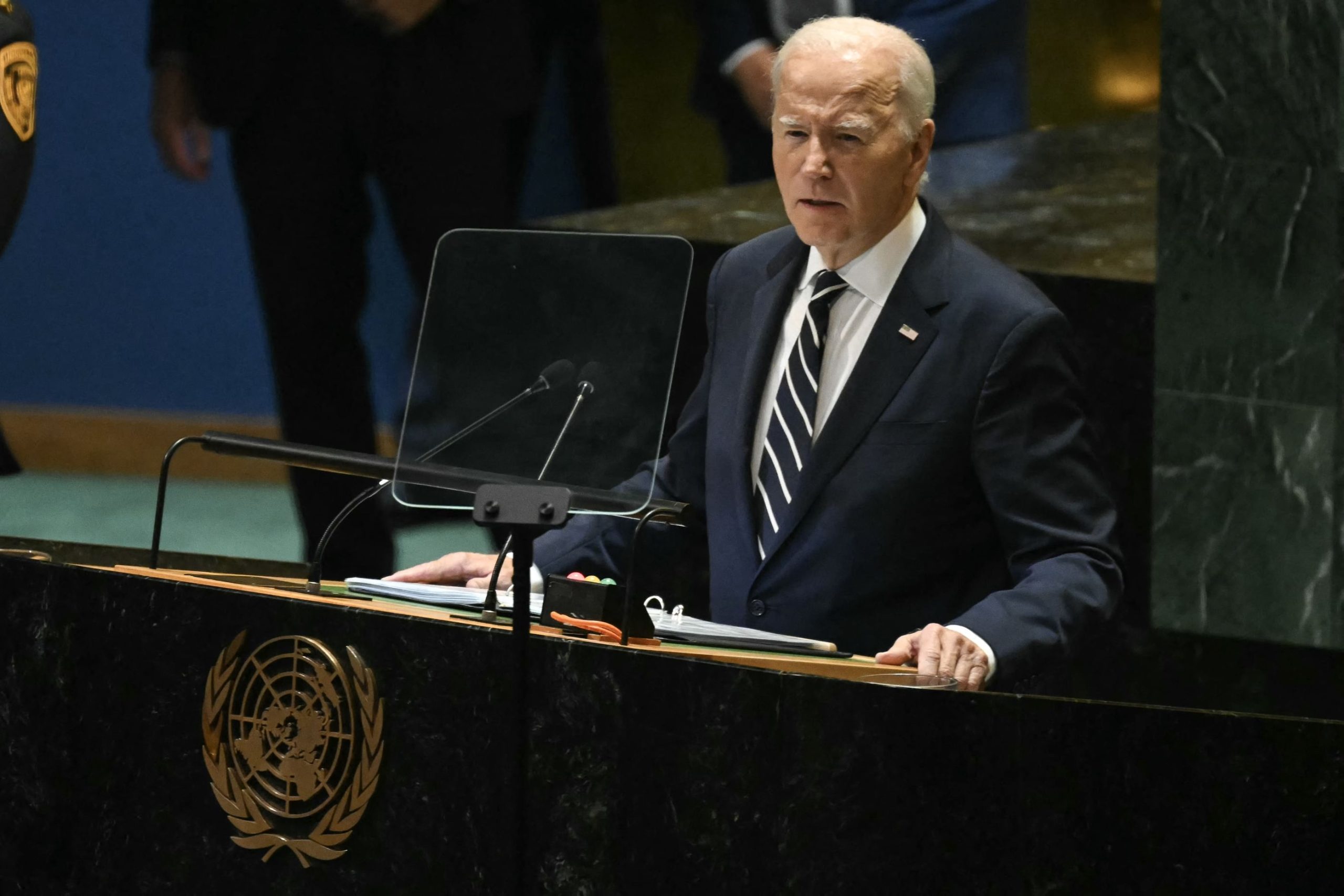The mayor of the besieged port city of Mariupol put the number of civilians killed there at more than 5,000 Wednesday, as Ukraine gathered evidence of Russian atrocities and braced for what could become a climactic battle for control of the country’s industrial east.
Ukrainian authorities continued gathering up the dead on the ruined outskirts of Kyiv amid mounting evidence the Russians killed civilians indiscriminately before withdrawing from the capital area over the past several days.
In other developments, the US and its Western allies moved to impose new sanctions against the Kremlin over what they branded war crimes.
And Russia completed the pullout of all of its estimated 24,000 or more troops from the Kyiv and Chernihiv areas in the north, sending them into Belarus or Russia to resupply and reorganize, a US defense official speaking on condition of anonymity said.
Ukrainian President Volodymyr Zelenskyy warned that Moscow is now marshaling reinforcements and trying to push deeper into the country’s east, where the Kremlin has said its goal is to “liberate” the Donbas, Ukraine’s mostly Russian-speaking industrial heartland.
“The fate of our land and of our people is being decided. We know what we are fighting for. And we will do everything to win,” Zelenskyy said.
For the latest headlines, follow our Google News channel online or via the app.
Ukrainian authorities urged people living in the Donbas to evacuate now, ahead of an impending Russian offensive, while there is still time.
“Later, people will come under fire,” Deputy Prime Minister Iryna Vereshchuk said, “and we won’t be able to do anything to help them.”
A Western official, speaking on condition of anonymity to discuss intelligence estimates, said it will take Russia’s damaged forces as much as a month to regroup for a major push on eastern Ukraine. Almost a quarter of its battalion tactical groups in the country have been rendered “non-combat-effective” and have either withdrawn or merged with other units, the official said.
Mariupol Mayor Vadym Boichenko said that of the more than 5,000 civilians killed during weeks of Russian bombardment and street fighting, 210 were children. He said Russian forces bombed hospitals, including one where 50 people burned to death.
Boichenko said that more than 90 percent of the city’s infrastructure has been destroyed by the shelling. The Russian military has besieged the strategic port on the Sea of Azov, cutting food, water and fuel supplies and pulverizing homes and businesses.
British defense officials said 160,000 people remained trapped in the city, which had a prewar population of 430,000. A humanitarian-relief convoy accompanied by the Red Cross has been trying without success to get into the city since Friday.
Capturing the city would allow Russia to secure a continuous land corridor to the Crimean Peninsula, which Russia seized from Ukraine in 2014.
Meanwhile, in the scarred and silent streets of Bucha and other towns around Ukraine’s capital where Russian forces withdrew, investigators sought to document what appeared to be widespread killings of civilians. Some victims had evidently been shot at close range. Some were found with their hands bound or their flesh burned.
At a cemetery in Bucha, workers began to load more than 60 bodies apparently collected over the past few days into a grocery shipping truck for transport to a facility for further investigation.
More bodies were yet to be collected in Bucha. The Associated Press saw two in a house in a silent neighborhood. From time to time there was the muffled boom of workers clearing the town of mines and other unexploded ordnance.
In Andriivka, a village about 60 kilometers (40 miles) west of Kyiv, two police officers from the nearby town of Makariv came Tuesday to identify a man whose body was in a field beside tank tracks. Officers found 20 bodies in the Makariv area, Capt. Alla Pustova said.
Andriivka residents said the Russians arrived in early March and took locals’ phones. Some people were detained, then released. Others met unknown fates. Some described sheltering for weeks in cellars normally used for storing vegetables for winter.
With the sixth week of the war drawing to a close, the soldiers were gone, and Russian armored personnel carriers, a tank and other vehicles sat destroyed on both ends of the road running through the village. Several buildings were reduced to mounds of bricks and corrugated metal. Residents struggled without heat, electricity or cooking gas.
“First we were scared, now we are hysterical,” said Valentyna Klymenko, 64. She said she, her husband and two neighbors weathered the siege by sleeping on stacks of potatoes covered with a mattress and blankets. “We didn’t cry at first. Now we are crying.”
To the north of the village, in the town of Borodyanka, rescue workers combed through the rubble of apartment blocks, looking for bodies. Mine-disposal units worked nearby.
The Kremlin has insisted its troops have committed no war crimes, charging that the images out of Bucha were staged by the Ukrainians.
Thwarted in their efforts to swiftly take the capital, increasing numbers of President Vladimir Putin’s troops, along with mercenaries, have been reported moving into the Donbas.
At least five people were killed by Russian shelling Wednesday in the Donbas’ Donetsk region, according to Gov. Pavlo Kyrylenko, who urged civilians to leave for safer areas.
Russian forces also attacked a fuel depot and a factory in the Dnipropetrovsk region, just west of the Donbas, authorities said. In the Luhansk region, which is part of the Donbas, And Russian shelling set fire to at least 10 multi-story buildings and a mall in the town of Sievierodonetsk, the regional governor reported. There was no immediate word on deaths or injuries.
Ukrainian forces have been fighting Russia-backed separatists in the Donbas since 2014. Ahead of its Feb. 24 invasion, Moscow recognized the Luhansk and Donetsk regions as independent states.
Ukrainian authorities have said the bodies of at least 410 civilians have been found in towns around Kyiv, and Associated Press journalists in Bucha counted dozens of corpses in civilian clothes and interviewed Ukrainians who told of witnessing atrocities.
In a video address Tuesday to the U.N. Security Council, Zelenskyy said that civilians had been tortured, shot in the back of the head, thrown down wells, blown up with grenades in their apartments and crushed to death by tanks while in cars.
He said that those who gave the orders and those who carried them out should face war crimes charges in front of a Nuremberg-type tribunal.
In reaction to the alleged atrocities, the US announced sanctions against Putin’s two adult daughters and said it is toughening penalties against Russian banks. Britain banned investment in Russia and pledged to end its dependence on Russian coal and oil by the end of the year.
The European Union was also expected to take additional punitive measures, including an embargo on coal.
Elsewhere in Ukraine, the aid group Doctors without Borders said its staff witnessed an attack Monday on a cancer hospital in a residential district of the southern city of Mykolaiv. The group said it was the third known strike in recent days on a hospital in the port city, whose capture is key to giving Russia control of the Black Sea coast.
It said it had no overall death toll, but its team saw one body.
The group said it also saw numerous small holes in the ground, scattered over a large area, that suggested the use of cluster bombs. Russia has denied using cluster munitions in Ukraine. The use of such weapons against civilians can be a violation of international law.
Negotiators from Russia and Ukraine have been discussing ways to end the fighting. Kremlin spokesman Dmitry Peskov said those talks continue despite the war crime allegations.
Read more:
US training small number of Ukrainians on Switchblade drones: Defense official
Russia’s war could last for years as Putin still wants ‘whole of Ukraine’: NATO chief
Russia has completed withdrawal from around Kyiv: US defense official

 World3 years ago
World3 years ago
 World3 years ago
World3 years ago
 Business1 year ago
Business1 year ago
 Entertainment7 years ago
Entertainment7 years ago
 World7 years ago
World7 years ago
 Entertainment7 years ago
Entertainment7 years ago





